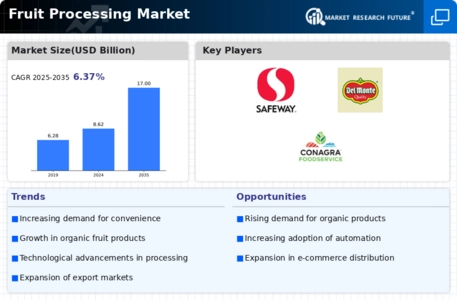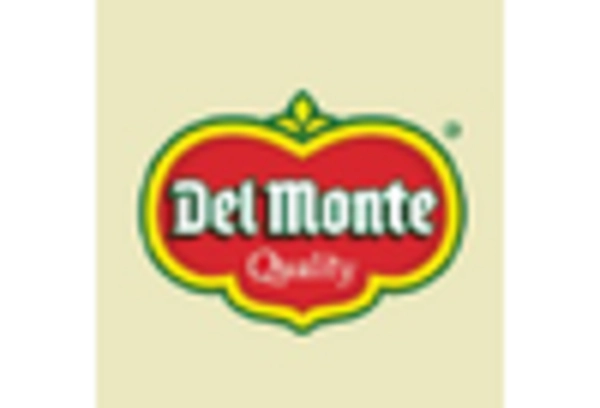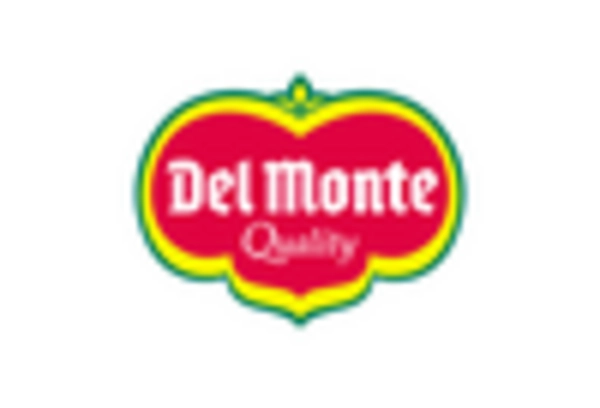Growing Health Awareness
The rising health awareness among consumers is significantly influencing the Fruit Processing Market. As individuals become more conscious of their dietary choices, there is a marked shift towards healthier food options. This trend is reflected in the increasing consumption of processed fruits, which are perceived as nutritious and beneficial for health. Data indicates that the market for fruit-based health products is expanding, with a projected growth rate of around 6% annually. This shift is prompting manufacturers to enhance their product offerings, focusing on natural ingredients and minimal processing. The Fruit Processing Market is thus positioned to capitalize on this health-centric consumer behavior, potentially leading to innovative product developments that align with health trends.
Expansion of Distribution Channels
The expansion of distribution channels is a critical driver for the Fruit Processing Market. With the rise of e-commerce and online grocery shopping, processed fruit products are becoming more accessible to consumers. Retailers are increasingly diversifying their distribution strategies, including partnerships with online platforms and direct-to-consumer sales. This trend is supported by data showing that online grocery sales have surged, with a significant portion attributed to processed food items. Consequently, the Fruit Processing Market is adapting to these changes, ensuring that products are readily available across various platforms. This accessibility is likely to enhance market penetration and drive sales growth.
Rising Demand for Convenience Foods
The increasing demand for convenience foods is a notable driver in the Fruit Processing Market. Consumers are increasingly seeking ready-to-eat and easy-to-prepare food options, which has led to a surge in processed fruit products. According to recent data, the processed fruit segment is projected to grow at a compound annual growth rate of approximately 5.5% over the next five years. This trend is particularly evident in urban areas where busy lifestyles necessitate quick meal solutions. As a result, manufacturers are innovating to create fruit-based snacks, juices, and purees that cater to this demand. The Fruit Processing Market is thus adapting to meet consumer preferences, focusing on convenience while maintaining quality and nutritional value.
Increased Focus on Sustainable Practices
The increased focus on sustainable practices is emerging as a vital driver in the Fruit Processing Market. Consumers are becoming more environmentally conscious, leading to a demand for sustainably sourced and processed fruit products. This trend is prompting manufacturers to adopt eco-friendly practices, such as reducing waste and utilizing renewable energy sources in production. Data suggests that the market for sustainable food products is growing, with consumers willing to pay a premium for environmentally friendly options. As a result, the Fruit Processing Market is likely to see a shift towards sustainability, influencing product development and marketing strategies to align with consumer values.
Technological Innovations in Processing Techniques
Technological advancements in processing techniques are reshaping the Fruit Processing Market. Innovations such as high-pressure processing, freeze-drying, and advanced packaging solutions are enhancing the quality and shelf life of processed fruit products. These technologies not only improve the nutritional profile of fruits but also cater to the growing demand for organic and minimally processed options. The market is witnessing a shift towards automation and smart processing systems, which can increase efficiency and reduce waste. As a result, the Fruit Processing Market is likely to experience growth driven by these technological improvements, enabling producers to meet consumer expectations for quality and sustainability.

















Leave a Comment